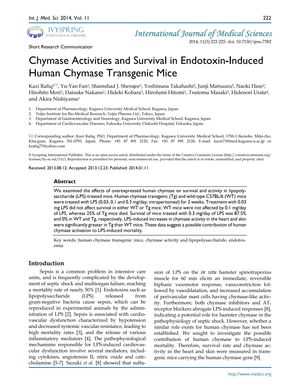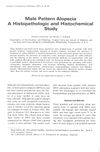Chymase Activities and Survival in Endotoxin-Induced Human Chymase Transgenic Mice
January 2014
in “
International Journal of Medical Sciences
”

TLDR Mice with human chymase had a higher death rate when exposed to a toxin compared to normal mice.
The study from 2014 examined the impact of human chymase overexpression on survival in mice treated with lipopolysaccharide (LPS). Human chymase transgenic (Tg) mice and wild-type (WT) mice were administered LPS at doses of 0.03, 0.1, and 0.3 mg/day for two weeks. At the lowest dose, survival was the same for both groups. At 0.1 mg/day, all WT mice survived, but 25% of Tg mice died. At the highest dose, 87.5% of WT mice survived, while all Tg mice died. Chymase activity in Tg mice increased significantly in the heart and skin after LPS treatment compared to WT mice. The findings indicate that human chymase may play a role in LPS-induced mortality, suggesting its involvement in the pathophysiology of endotoxemia, with further research needed for a deeper understanding.

